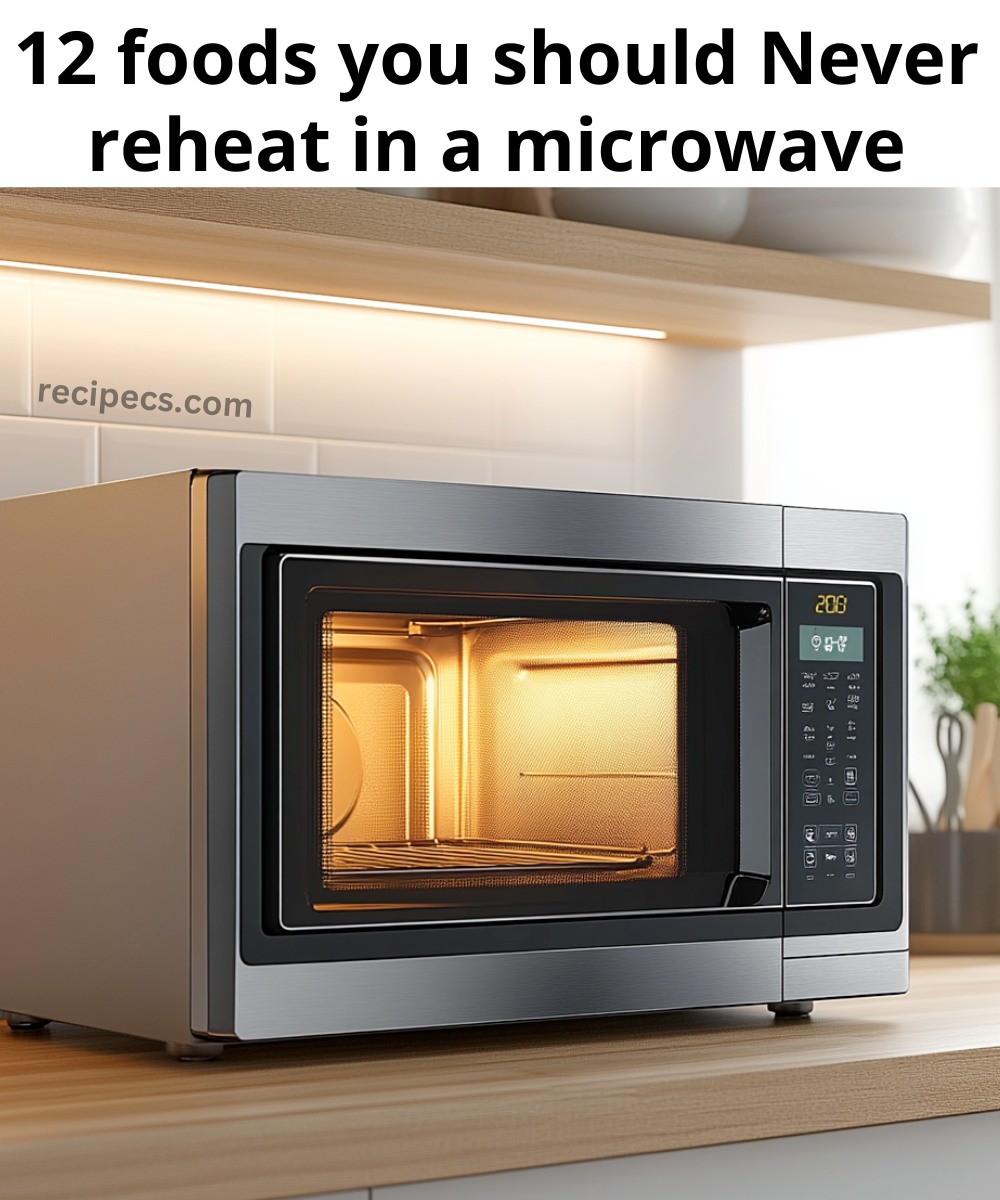ADVERTISEMENT
—
### **7. Fish**
Reheating fish in the microwave can lead to an unpleasant odor and a rubbery texture. Certain oils in fish may also oxidize when reheated, which can affect its nutritional value.
**Tip**: Use an oven or stovetop to reheat fish for better taste and texture.
—
### **8. Breast Milk or Baby Formula**
Microwaving breast milk or baby formula can cause uneven heating, leading to hotspots that may burn a baby’s mouth. It can also destroy valuable nutrients in breast milk.
**Tip**: Warm breast milk or formula in a bowl of warm water instead.
—
### **9. Fried Foods**
Fried foods lose their crispiness in the microwave, turning soggy and unappealing. The rapid reheating also causes the oil to break down, which can impact flavor.
**Tip**: Use an air fryer or oven to restore the crunch in fried foods.
—
### **10. Pasta with Cream or Cheese-Based Sauces**
Pasta dishes with cream or cheese sauces tend to separate and become greasy when reheated in the microwave. The texture often turns unappetizing.
**Tip**: Reheat pasta on the stovetop with a splash of milk or cream to restore its creamy consistency.
—
### **11. Bread**
Microwaving bread can make it chewy or hard instead of soft. The moisture in bread evaporates unevenly, ruining its texture.
**Tip**: Warm bread in the oven or a toaster for better results.
—
### **12. Processed Meats**
Processed meats, such as bacon, sausages, or hot dogs, can release harmful chemicals like nitrosamines when reheated in the microwave. These compounds may pose health risks.
**Tip**: Heat processed meats on a grill, skillet, or in the oven for safer consumption.
—
### **Key Tips for Safe Reheating**
1. **Reheat Evenly**: Stir foods halfway through microwaving to ensure even heating.
2. **Check Temperatures**: Use a food thermometer to ensure reheated dishes reach at least 165°F (74°C).
3. **Avoid Room Temperature Storage**: Store leftovers in the fridge within two hours of cooking to minimize bacterial growth.
—
### **Conclusion**
While the microwave is a handy tool, it’s important to know its limitations. Some foods are better reheated using alternative methods like stovetop cooking, baking, or steaming. Prioritize food safety and flavor by reheating your meals the right way. After all, a little extra effort in the kitchen can go a long way in ensuring delicious and safe meals!
ADVERTISEMENT
